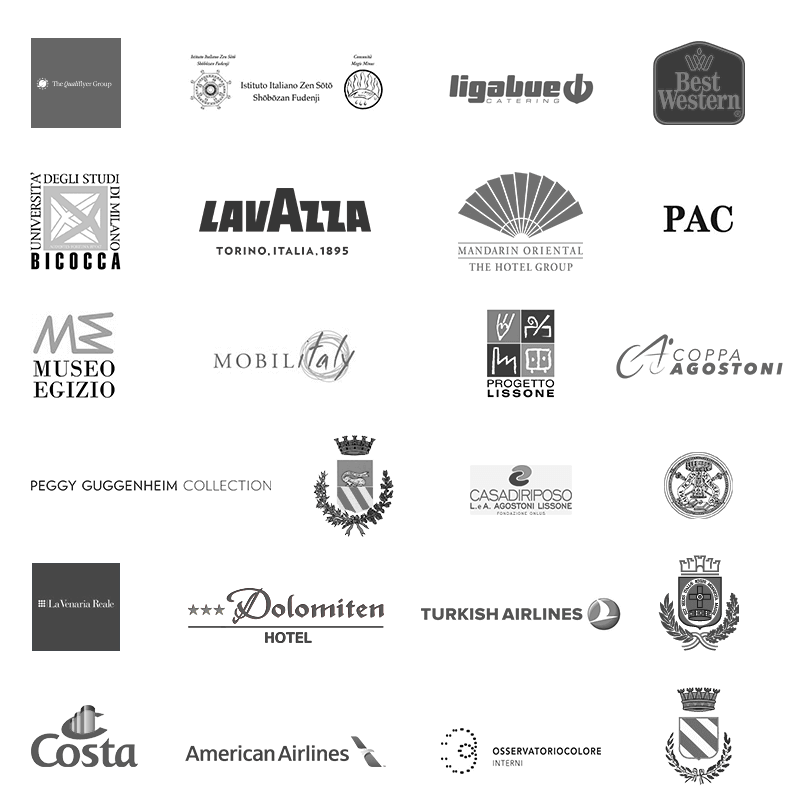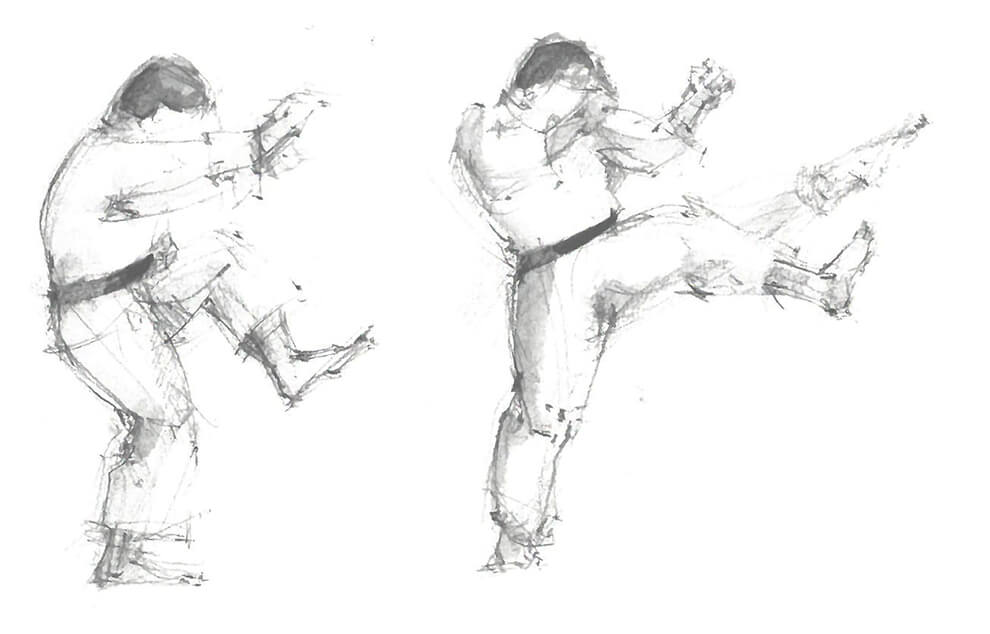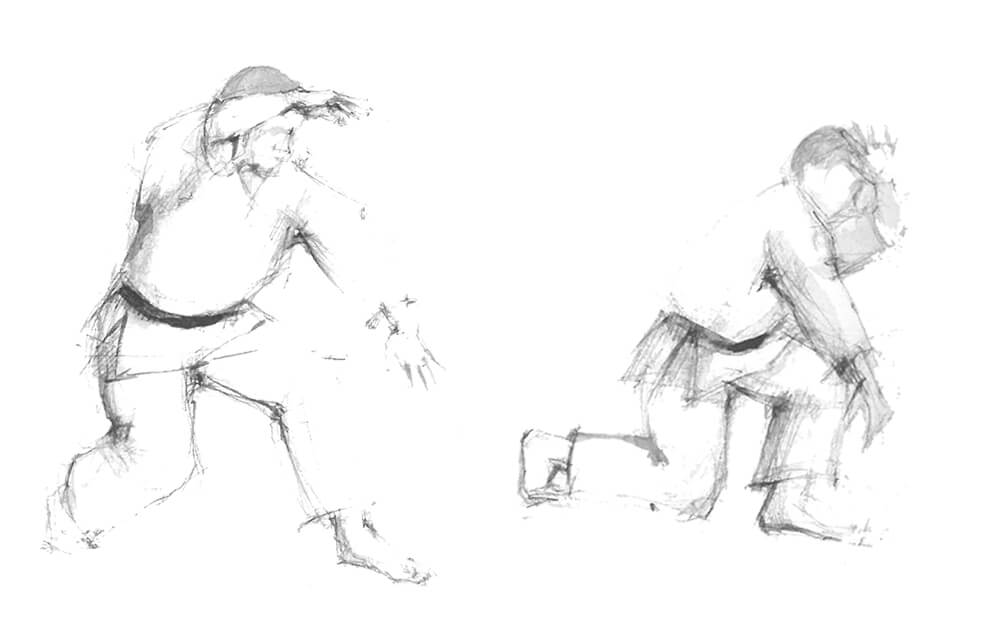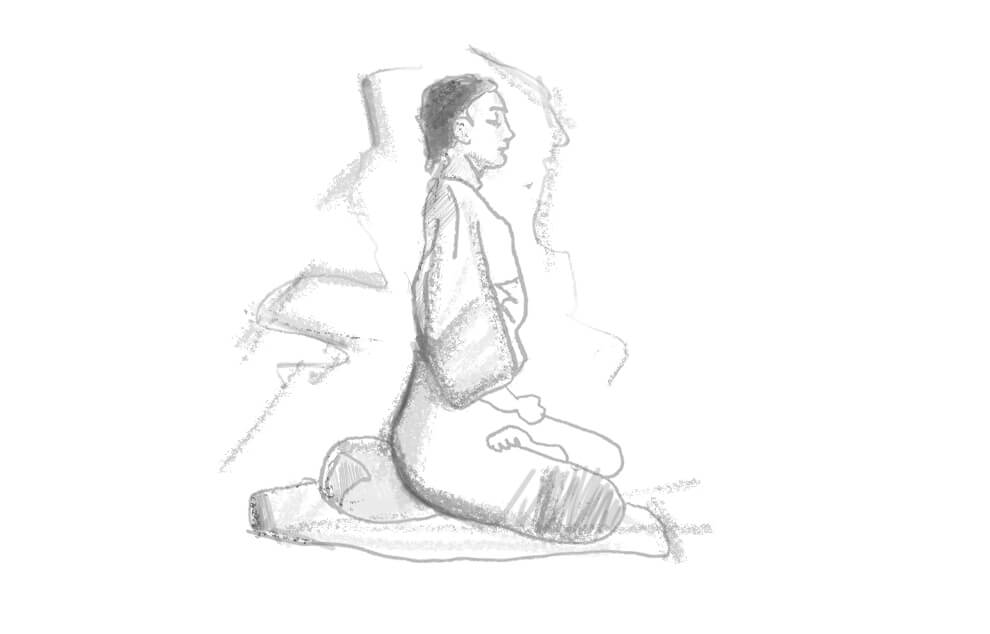THE VISION
Since my childhood I have always been fascinated by stories about the East. Sometimes I wonder which was the moment when curiosity gave way to the desire for knowledge.
I see myself as a child, under a big oak tree, fiddling with an album of drawing papers on which I scribbled with a myriad of colored crayons. It was the beginning of summer, my father was a gardener and often took me with him and, not knowing how to keep me engaged, placed me somewhere, always within sight, to give vent to my passions: the design and love for nature.
I have often thought about what I would have been if my father had not brought me with him, if had not forced me to those long hours of solitude and silence through which I could taste nature observing it in its innumerable manifestations: the wind, the sun, the rain, the fresh morning air.
I soon started to perceive my life as an attempt to pursue any opportunity and occasion that would lead to discovering something new. It was then when I met the people who accompanied me and brought me closer to the world of Oriental disciplines , from Zen meditation to Qi Gong and Taiji Quan at the beginning to the inevitable one of the Feng Shui later on.
The experience gained over several years of practice has convinced me of the very close relationship existing between being physically well and the harmony of the space that surrounds us.
Francesco Rossena
We are contemporary thanks to the tradition.
We are contemporary thanks to the tradition.
Stilitaly Lab has distant origins and is constituted as a studio of young professionals group back in 1979. These are years of good will and the desire to participate and share, when the first company was born with a clear propensity to building activity, design and construction of all types of furniture.
Even nowadays Stilitaly Lab maintains the initial spirit conferred by its founder, the architect Francesco Rossena, which is: looking at the new design scenarios, without however bypassing the tradition of know-how.
Together with the history of Stilitaly Lab, there was developed the path of body awareness that is the holistic knowledge. The holistic knowledge begins in 1978 through the practice of oriental disciplines (Shaolin, Zen meditation, Qi Gong, Tai Chi Chuan) and it was condensed due to the first studies on Feng Shui at the beginning of the 90s.
OUR CUSTOMERS

STAFF
Competence and seriousness are the foundations of our group and through the spirit of initiative and creativity that distinguish us we aim to create new relationships, to imagine new horizons. This vision unites and motivates professionals, architects, designers, producers and artisans, who work with passion and inspiration for Stilitaly Lab. It invites reflection on the sense of civic duty, respect and a sense of nature.
THE DISCIPLINES OF WELLNESS
The harmony, the balance between us and the surrounding environment are the necessary conditions to create well-being. To really succeed in it, we must acquire a different body awareness.
Man is the target of a good architecture and a good architect should turn to him. Therefore the Feng Shui (energy architect) expert cannot ignore a body knowledge of “Qi” (Chi – vital energy).
We are not talking about an intellectual knowledge, but a physical experience elaborated through a constant daily practice of gestures and emotions where even the ritual assume a significant importance.
What is Qi?
It takes on different meanings for Eastern world. It is life force, breath, blow of life (the first and last breath), the emotions and moods that run through our body.
The traditional Chinese medicine talks about meridians that run within our body conveying the “Qi”; when the “Qi” suffers from slowdowns, transformations or blockages, the malaise arises.
Qi flows in our houses as well as in our body. We will inevitably have some repercussions if “ Qi” is negative.
The harmony between us and our daily context is the necessary condition to create well-being. Not to mention the arrangement and organization of work spaces that have concrete effects on the productivity and health of the staff as well as on good relations with the customers.
THE DISCIPLINES OF WELLNESS
The harmony, the balance between us and the surrounding environment are the necessary conditions to create well-being. To really succeed in it, we must acquire a different body awareness.
Man is the target of a good architecture and a good architect should turn to him. Therefore the Feng Shui (energy architect) expert cannot ignore a body knowledge of “Qi” (Chi – vital energy).
We are not talking about an intellectual knowledge, but a physical experience elaborated through a constant daily practice of gestures and emotions where even the ritual assume a significant importance.
What is Qi?
It takes on different meanings for Eastern world. It is life force, breath, blow of life (the first and last breath), the emotions and moods that run through our body.
The traditional Chinese medicine talks about meridians that run within our body conveying the “Qi”; when the “Qi” suffers from slowdowns, transformations or blockages, the malaise arises.
Qi flows in our houses as well as in our body. We will inevitably have some repercussions if “ Qi” is negative.
The harmony between us and our daily context is the necessary condition to create well-being. Not to mention the arrangement and organization of work spaces that have concrete effects on the productivity and health of the staff as well as on good relations with the customers.

Qi Gong (the art of breathing) is the first step to make our body work harmoniously, indicating a series of simple exercises by which we can thin the meridians and make flow the “Qi”.
Well-being is a concrete sensation. It is the physical perception of a state of serenity.
Creating new bonds between mind and body means maintaining one’s physical and spiritual balance over time. The practice of Tai Chi Chuan helps us to pursue this goal through the ritual of slow gestures, soft movements and a harmonious execution in order to develop strength and speed.
Qi Gong (the art of breathing) is the first step to make our body work harmoniously, indicating a series of simple exercises by which we can thin the meridians and make flow the “Qi”.
Well-being is a concrete sensation. It is the physical perception of a state of serenity.
Creating new bonds between mind and body means maintaining one’s physical and spiritual balance over time. The practice of Tai Chi Chuan helps us to pursue this goal through the ritual of slow gestures, soft movements and a harmonious execution in order to develop strength and speed.

It is during Zen (Za Zen) meditation that the constant concentration on immobility and posture, empties our mind from excessive worries, from the crowding of various thoughts. Practicing Za Zen (seated meditation in the lotus position) generates strength, balance, serenity and a sense of freedom that transforms our relationship with the world, making it more creative and perceptive spontaneously.
As we become masters of this reborn well-being that is the concrete perception between sky and earth, of our harmonious hic et nunc being, then we can turn our attention to the search for harmony with our surroundings, with the space that surrounds us.
Feng Shui is an effective method that allows us to understand the energy relationships that exist between us and a house or workplace. The wind (Feng) disperses the “Qi”. The water (Shui) holds and accumulates it. We must therefore understand when the “Qi” must be dissolved and when, on the contrary, it must be restrained.
Knowing the Feng Shui techniques allows us to adapt the environment so that the “Qi” can flow freely and harmoniously bringing well-being, health and prosperity to the people who live in that environment.
It is during Zen (Za Zen) meditation that the constant concentration on immobility and posture, empties our mind from excessive worries, from the crowding of various thoughts. Practicing Za Zen (seated meditation in the lotus position) generates strength, balance, serenity and a sense of freedom that transforms our relationship with the world, making it more creative and perceptive spontaneously.
As we become masters of this reborn well-being that is the concrete perception between sky and earth, of our harmonious hic et nunc being, then we can turn our attention to the search for harmony with our surroundings, with the space that surrounds us.
Feng Shui is an effective method that allows us to understand the energy relationships that exist between us and a house or workplace. The wind (Feng) disperses the “Qi”. The water (Shui) holds and accumulates it. We must therefore understand when the “Qi” must be dissolved and when, on the contrary, it must be restrained.
Knowing the Feng Shui techniques allows us to adapt the environment so that the “Qi” can flow freely and harmoniously bringing well-being, health and prosperity to the people who live in that environment.



